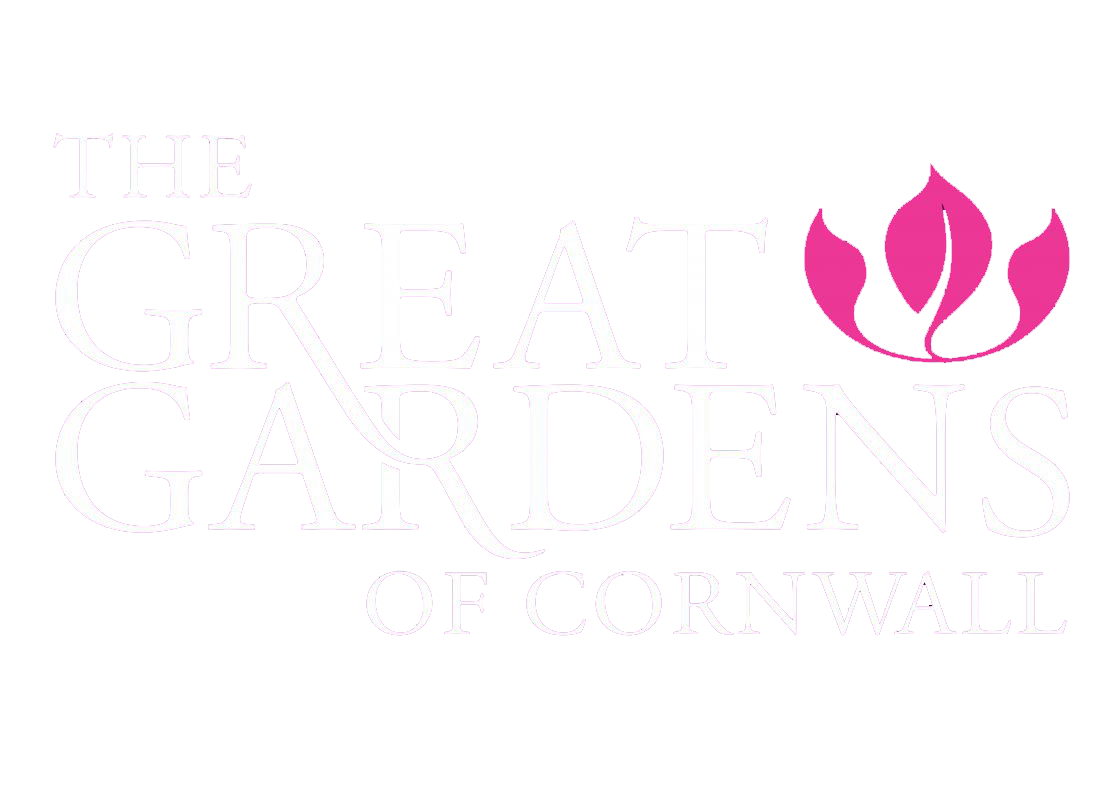A Great Garden of Cornwall in an iconic location overlooking St Michael’s Mount
Two miles from Penzance lies the restorative and graceful sanctuary that is Tremenheere Sculpture Gardens; a garden where individual elements collaborate to create a transportive sense of calm. There is a compelling narrative to the landscape here,with sub-tropical planting and vegetation intertwined with inspirational sculpture work by world famous artists. Far-reaching views over Mounts Bay and St Michael’s Mount, an established woodland and a beautiful stream, give this site a magical quality that you need to experience in the flesh to truly appreciate.
As you walk the intricate network of paths on your journey amongst the planting, it’s hard to believe that this garden was built from scratch just over 25 years ago. The dramatic foliage of tree ferns, palm trees, succulents and bamboo provide height and form, yet swaddle your soul in a soothing embrace. It feels like the plants and sculptures have always known this place, and known each other. There is a connection between the land, the view, the boardwalk, the planting and the art, that is both timeless and transcendental.
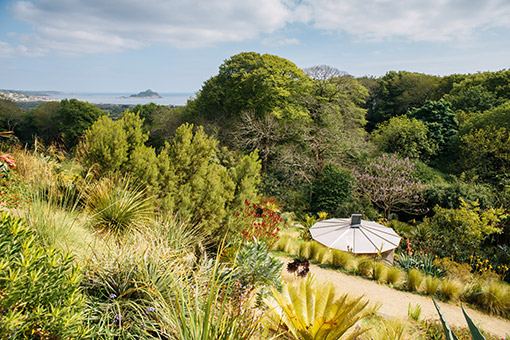
📸 Karl Davies
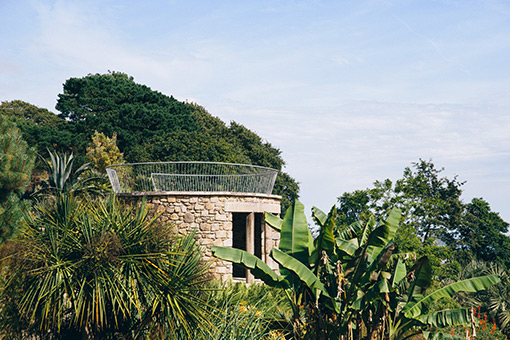
📸 Karl Davies
The history of Tremenheere
The land that Tremenheere Sculpture Gardens inhabits was, until 1295, owned by the Monks of St Michael’s Mount. The land was then owned by Tremenheere’s for the next 600 years- albeit from two separate families. In the 15th-century the site was a vineyard for St Michael’s Mount, with the Tremenheere family turning their hand to being vintners. The last wolf In England was said to have roamed the woods at Tremenheere A gIant specImen It was reportedly slaIn at nearby Rospeath In 1794
In the 19th-century the land was a favoured strawberry growing plot, with much of the bounty being exported across the Atlantic to Newfoundland. Seymour Tremenheere planted the Beech, Oak, Sweet Chestnut and Holly throughout the woods, which remain great assets to the garden today.
When the tenure of the Tremenheere line ended, the land was farmed by the Pearce family for four generations, until Dr. Neil Armstrong, a full-time GP with four children, brought his dreams and designs to Tremenheere in 1997.
A blank canvas becomes a work of art
When Neil Armstrong acquired the land it was a sloping valley, with natural shelter from the prevailing winds – a promising but very blank canvas. Neil had a vision for the garden he wanted to create; it was an ambitious plan but his hard work, instinct and passion succeeded in developing this plot into a Great Garden of Cornwall in just a few decades.
In the early days Neil may have wondered if he’d bitten off more than he could chew. The land was heavily overgrown with brambles well over head height, rhododendrons gone wild, and an impassable swamp. However, despite bracken having colonised much of the open land and fallen trees littering the landscape, the land clearly had potential. Neil got to work planting shelterbelts of Pinus radiata, Quercus ilex and sundry native trees to support the existing mature tree population.
Like many other great Cornish gardens Tremenheere is blessed with its own micro-climate, keeping the winters mild enough to encourage experimental planting. The site is south facing with good soil, shelter and a free-flowing stream; its history suggested it was a prime spot for cultivation, and its natural features and assets were very favourable indeed.

📸 Richard Bloom
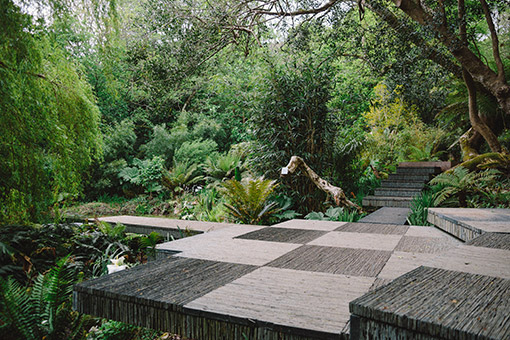
📸 Karl Davies
A garden for the Millennium
In the year 2000 Neil wrote an article in the Cornwall Gardens Trust Journal, explaining his vision for Tremenheere, and declaring his admiration for the great gardener and horticultural writer William Robinson. In his landmark work ‘The English Flower Garden’ (1883), Robinson encouraged more imagination and subjective interpretation within gardening. He felt gardeners should feel free to create an individual artistic space, a personal wilderness, where plants interacted and were connected to each other. Neil wanted to create “A garden for the Millennium – something the next generation could aspire to”. A place where sculpture and garden could coexist, man-made objects complementing and blending with the natural landscape and planting schemes.
Unlike a traditional country estate, Neil did not have a manor house or existing driveway at Tremenheere to distract the eye and dictate the layout. Neil was free to experiment with how you enter and journey around the garden – an unusual and creative bonus towards realising such ambition! Access tracks were necessary to manage the steep terrain and these doubled as convenient dividers, compartmentalising the garden into distinct areas with individual moods. The planting in each section of the garden varies, but adheres to unifying textures, themes, colours and sculptural forms, always working in harmony with nature to complement the local habitat. Paths were created that follow the camber of the site, and make the most of the incredible views of St Mounts Bay. Today, visitors to Tremenheere are invited to enter via an unassuming track, and are surprised by the generous and dramatic landscape that opens up before them.
Source: https://cornwallgardenstrust.org.uk/profile-of-a-dreamer/

📸 Richard Bloom

📸 Karl Davies
A landscape where art and nature grow as one
Tremenheere Sculpture Gardens is more than a garden, it’s a fusion of different types of beauty, the perfect union of natural and manmade elements.
“The guiding principle of the garden has been to evolve a naturalistic, Arcadian space that blends elements of landscape, planting and art to create a place for contemplation and wonder”.
Tremenheere’s individuality adds variety and texture to the top echelon of Cornish gardens. Unlike many of its fellows, there is no traditional spring flourish here, the aim is to maintain the artistic interest and appeal year round. The planting scheme is structural with a strong sub-tropical emphasis, and the landscape and sculptures beguile, whether bathed in sunshine or Cornish mizzle.
Tremenheere is known for its notable collection of palm trees, tree ferns, succulents and bamboo, but that is just the tip of the iceberg. Tremenheere currently has over 2,500 plant species growing in the garden – a staggering horticultural feat. The team at Tremenheere keep an up to date list on their website of all of the plants that are discoverable in the garden, the zone in which they are planted, and a handy map of the 50 garden zones to guide you. This promises hours of fun for the plant hunters amongst you!
Source: https://www.tremenheere.co.uk/
Global artists have created sculptures for Tremenheere
The iconic landscape and exotic planting have provided inspiration for the creation of site-specific artwork by internationally respected artists such as James Turrell, David Nash, Richard Long and Tim Shaw.
Amazingly, Tremenheere is the only place In Europe to host two works by global superstar artist James Turrell. His first was “Tewlwolow Kernow (2012), Cornish for Twilight in Cornwall, an impressive elliptical domed chamber designed to capture the extraordinary array of hues at dusk”. Turell’s second work “Aqua Oscura (2013), perhaps the most dramatic work in the entire garden, is situated in an underground water tank…The sheer range of emotions awakened in this space—from anxiety to dread, to calm, to euphoria—is enthralling”.
Numerous artists have felt the power and energy of the garden, and created sculptures that now permanently live at Tremenheere. The works of art do not compete for attention or glory in this natural place, they harmoniously coexist with a sense of acceptance, surrender and inevitability. There is also a forum here for fluid or temporary art, always kept in balance with the Cornish landscape, and as ever, with an eye on quality and symbiosis.
An example of the perfect melding of art and nature is demonstrated by ‘Stachys’, a recent sculptural addition to the garden created by Rebecca Newnham.
“Stachys is about a life cycle: the mass flowering of bamboo, where a whole species blooms and then dies, producing an enormous quantity of seed. The whole species then germinates; a quality unique to some bamboo. The arms lift and open towards the sky, in a celebration of the natural world… Some species of bamboo flower as rarely as every 130 years, and are known as monocarpic. A mass flowering, when the spikes produce a fluorescence and eventually seed, heralds the imminent death of such a variety, and the plant then regenerates from the seed produced. The spikes and their bracts that protect developing seed, are focused upon, to celebrate this invigoration and a circle of life, in Stachys”.
Stachys can be found at the end of the boardwalk through the woods, planted at the top of the steps.
Source: https://sculpturemagazine.art/tremenheere-sculpture-gardens-collaborating-with-nature/
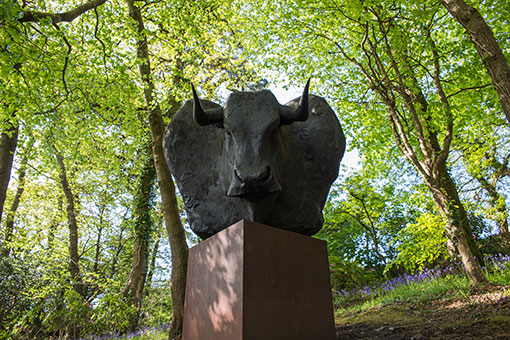
📸 Tim Shaw
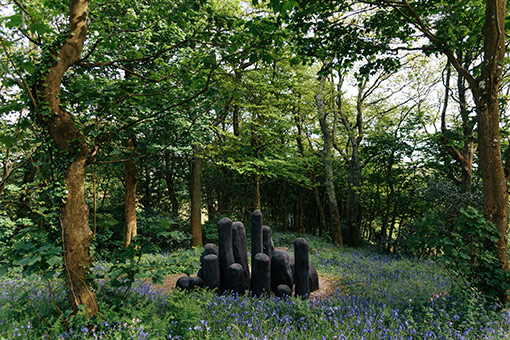
📸 Karl Davies
Tremenheere Gallery
Tremenheere Gallery is one of the largest purpose built art spaces in the county. It has proved to be a welcome addition to the Cornish gallery scene and provides a forum for a range of local, national and international artists to be seen.
Work inspired by a journey through the sculpture garden, and the connection artists have felt to the magic of the landscape, is regularly featured here. Since its opening in 2017, Tremenheere Gallery has hosted exhibitions by artists including Gillian Ayres, Rose Hilton, Stephen Chambers, Jeremy Le Grice, Romi Behrens and Jessica Cooper.
Tremenheere is a place that inspires connection
Jan Coles wrote, “The late Irish theologian, long-time priest and poet/author John O’Donohue would have loved this place. At the very edge of the land and in perpetual relationship with the horizon it feels to me like one of the ‘thin’ places of Celtic understanding. The veil between our physical world and the numinous slips at these places so that when you arrive here from crowdedness and noise it is indeed a ‘divine embrace’ that settles about you”.
The Monks of St Michael’s Mount considered Tremenheere a thin place – feeling connected to this land, a sheltered haven in a gentle sloping valley, for centuries – as did the Tremenheere family for their 600 year tenure. History shows us this land has drawn people close and inspired loyalty and connection, but what about in the years to come?
Neil dreamt that Tremenheere would become “A garden for the Millennium – something the next generation could aspire to”.
Neil has created a garden with such a wealth of connection points, that he has surely exceeded even his own original vision. A journey around this garden is a study in what can be achieved when man meets nature with a peaceful, curious mindset. Not to challenge or dominate, but to cohabitate for spiritual and artistic elevation.
William Robinson inspired gardeners to feel free to create individual artistic spaces where elements interact and connect to each other. Over a century on, this advice still holds true for the legion of artists who have been compelled to create, and you, the next generation of visitors to Tremenheere – who, through experiencing this garden, will strengthen your connection with nature.
There is a playful yet evocative quality about Tremenheere Sculpture Gardens that demonstrates an alternative way to engage with this incredible natural world of ours. There is so much beauty, sanctity and restorative energy to be discovered in this garden, just heed William Robinson’s advice, and explore with an open mind and an open heart – you never know what you will find.
Sources: https://www.tremenheere.co.uk/new-arrival-stachys-by-rebecca-newnham/ & Feature on Tremenheere Sculpture Gardens by Jan Coles, featured in the St. John’s Parish Magazine.
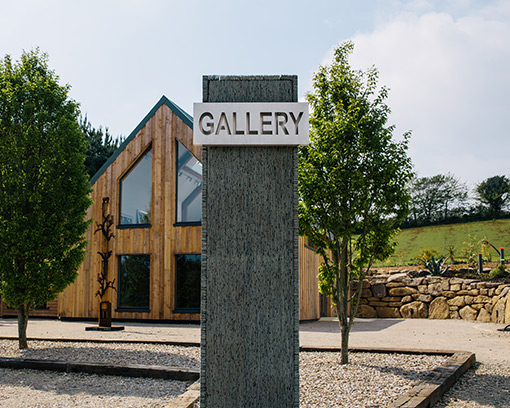
📸 Karl Davies
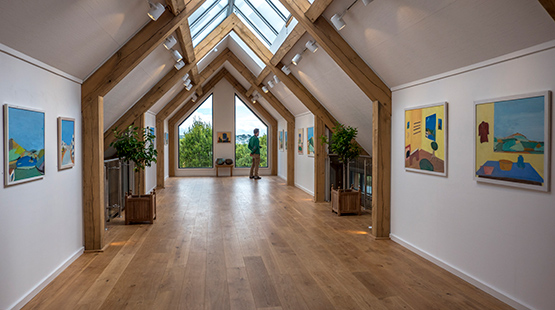
📸 Albon Rionard
